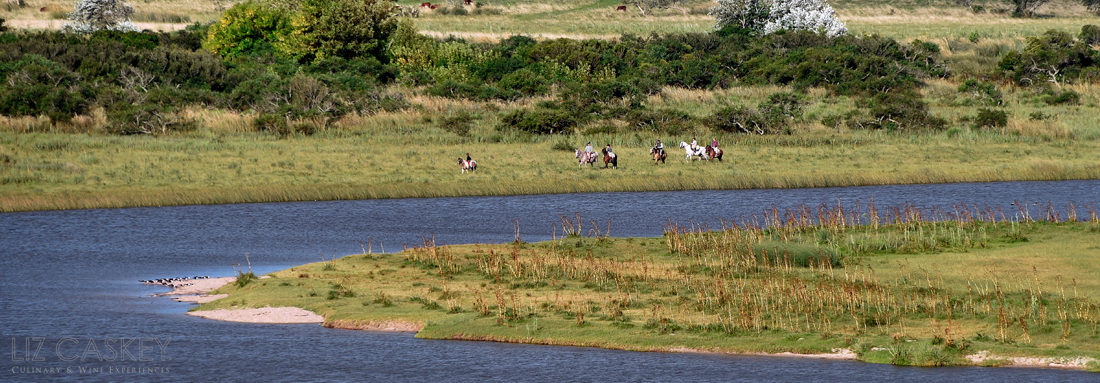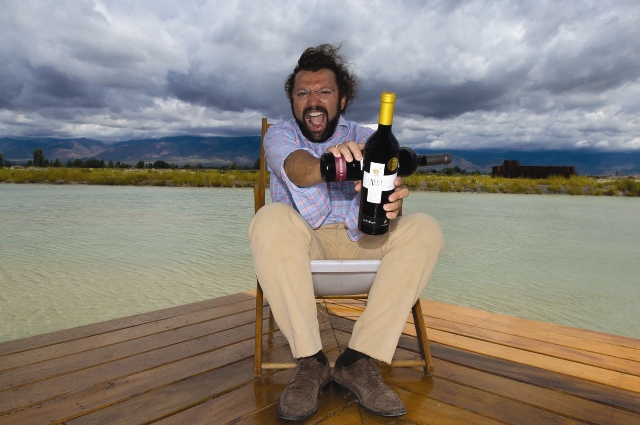Energetic. Passionate. Humble. Determined. Frank. Sophisticated and maybe even a little quirky. These are all adjectives I used to describe the wines in my recent tasting of O. Fournier‘s most recent vintage in Chile. As I scanned over my notes and reflections from the wines, I had to laugh. Who did they resemble? The owner, of course. My wise winemaker buddy, Tod, once told me that if I met the owner of a winery, I would already know the wines. He was absolutely right. It has been the case each and every time. It isn’t just about the winemaker crafting the wines, although they form a critical part of the equation. It’s the owner who serves as the guiding force by making decisions, giving shape and bringing the dream to life. They are the compass if you will. As I reread the descriptions of O. Fournier’s wines in Chile, I couldn’t help but think that these “babies” whisper of the unique terroir in the Maule and San Antonio; and strongly reflect their “father”, José Manuel, O. Fournier’s owner.
José Manuel Ortega hails from Spain. He is short statured, dark, bearded and spirited. He left behind a fruitful career at Goldman Sachs in New York and later at Santander in Madrid as a banker to pursue his passion: wine. To many wine lovers, it may seem like a crazy dream (and secret fantasy) to start their own winery–and seriously risky business. But since when have entrepreneurs been risk adverse? In 2000, José Manuel formed the O. Fournier winery group, a super ambiticious project to form (when finished) four wineries in four countries and two continents: old world and new world. Bold and daring? Absolutely. A plan like this requires some major cojones, as the Spanish would say. However, already he’s already proven with O. Fournier, now three times over, in Spain, Argentina, and Chile that when you make a committed decision with a vision, success is absolutely inevitable, with a hurdle or hundred.
José Manuel and I met through a colleague in 2006 and realized we shared the same alma mater, the University of Pennsylvania and the common passion of wine and business. As the newest family member of O. Fournier winery group, Chile, showcases its newest wines in the international market, I caught up with JM to share his perspective on this very intriguing project. Just like in Spain and Mendoza, O. Fournier has always chosen off-the-beaten path regions to develop their projects in search of terroir, expression, and the best wines possible. This time is no different. In Chile, he plowed straight past the little darling of Colchagua into the southern lesser known appellation of the Maule serving up old, “lost” varietals of Carignan from old vines. The Sauvignon Blanc, already making waves with international wine writers like Jancis Robinson, are being born in the coastal area of San Antonio known as Lo Abarca.
Keep an eye on O. Fournier beyond their already established Mendoza and Spanish wines. The buzz about their Chilean wines is real and in crescendo. There’s a reason. Wines with personality. Killer price-quality price ratio. Solid winemaking. Passionate, humble owner. Formula for success? You bet. Stay tuned, my tasting notes will post later this week in part 2.
1. You have projects in Argentina and Spain. Why did you decide to come to Chile? Why did you pick the Maule region over other red wine areas like Colchagua? What were you looking for? How was the project born in your mind?
From the origins of the O. Fournier Group, there was an interest in developing wine projects in Spain and South America. We were convinced of the potential that Chile could provide. I have to admit that selecting the right areas was much more difficult than what we expected. Our technical staff went to visit vineyards 30 times in three years until we found Maule and Lo Abarca. A Chilean journalist had recommended both regions and we agreed they were perfect for the types of wines we aim to produce. We always want to make wines with personality and character and we felt that Maule and Lo Abarca were the regions. We do not follow fashion but potential.
2. How would you characterize the terroir of the Maule? Is there even a terroir? Please discuss the area and specifically your vineyard too.
There is tremendous terroir in Maule and Lo Abarca. We are a terroir producer. All our Argentine reds are produced exclusively with Uco Valle grapes. Our Torrontes is produced in Cafayate (Salta). In Spain, we only use grapes from our own vineyard in Ribera del Duero. In Chile, it had to be the same. We only produce white wines from San Antonio Valley and reds from Maule.
Our Lo Abarca property comprises several hills and plateaus. In 35 hectares, we find sandy soils at the bottom, decomposed granite soils in the middle and lighter clay at the top. There is a layer of iron around 15 feet underground. W eather conditions are unique with cool summer days and nights almost to the level of disaster.
Maule is one of the greatest high-quality wine areas in the world and definately the best in Chile by far. I always define as Bordeaux in an exceptional year. Warm days (over 80 F) and very cold nights ( in their mid to high 40) occur during the summer. There is no frost and hail so we can wait until the right ripeness is present in the grapes. We are the only winery in Chile that produces its reds with vines 65 to 120 years-old. The first lesson I learned in wine was to respect what old producers did. If Maule was always the most important valleys for centuries, we have to have respect for all those producers that were groing grapes for generations. Soils are also exceptional with sandy and low organic component clays. All our vineyards are dry-farmed. We are still astonished on the quality we are finding in Maule.
3. You use the same winemaker, José Spisso, for the entire O. Fournier family wineries. This is quite unusual considering they are spread across three countries and two continents. Can you explain the idea behind this?
Our winemaking philosophy at O. Fournier is very clear:
We have local winemakers in each of the countries who work on an exclusive basis with O. Fournier (Laura in Spain, Julia in Argentina and Jorge in Chile). Our winemakers have responsability over our vineyard engineers and have to be at the vineyard almost as much as at the winery. We try to aim for terroir and varietal tipicity but with the guidance of our Head of Winemaking, Jose Spisso. We do not have any outside wine consultants and if we ever use them we will not publish or market it. Jose is an exceptional winemaker and person. He was the first employee at O. Fournier in 2000. His ability to read the maturity of the grapes, oak aging and blending is second to none.
4. How do you see wines evolving in Chile? How would you compare and contrast them to Mendoza?
Our Chilean wines are very different from our Argentine ones. This has to do with the area. Maule is a much colder region than the Uco Valley. Our Maule wines have higher acidity, less alcohol and higher pH. They are not as voluptuous and exhuberant as our O. Fournier Mendoza wines. They possess character that is difficult to find in Chile today. We do not have some of the main technical defects one can find in some Chilean wines: lack of personality, too eucaliptus flavors, rusticity.
5. You use lesser utilized techniques in South America like bush vines. Can you describe the purpose behind this? How does it impact your wines?
We are actually producing wines from bush vines in the three countries! In Spain, 70% of our vineyards are planted under the bush vine concept. In Argentina, we have planted several hectares of bush vines being the first winery to do so there. In Chile, we have a couple of extremely old bushvine vineyards. There is a potential quality improvement of bush vines in sunny and dry areas: leaves produce a shade so clusters do not get burnt by direct sun exposure, plants live longer and need less water, yields are lower, leaves serve as protection agains hail.
6. How do you envision the O. Fournier project as it comes to fruition in Chile and the wines hitting the international market. How do you feel they will be received?
We have been extremely surprised by the response. There have been a sense of unanimity among journalist, importers and customers with respect to the quality and personality of our wines. I never expected this. We always liked our valleys and their potential but we never thought we could produce the wines we are producing. We are blessed with the opportunity to be able to make these type of wines.
Thank you to José Manuel, O. Fournier, Wines of Argentina, and most importantly, the talented Chilean-based photographer Matt Wilson for this rockin’ pic taken at O. Fournier’s bodega in Uco Valley, Mendoza.













